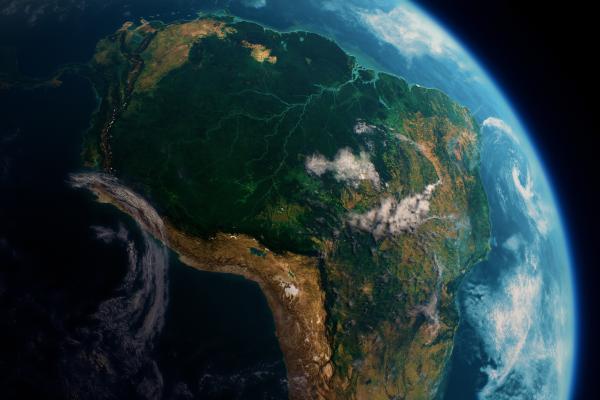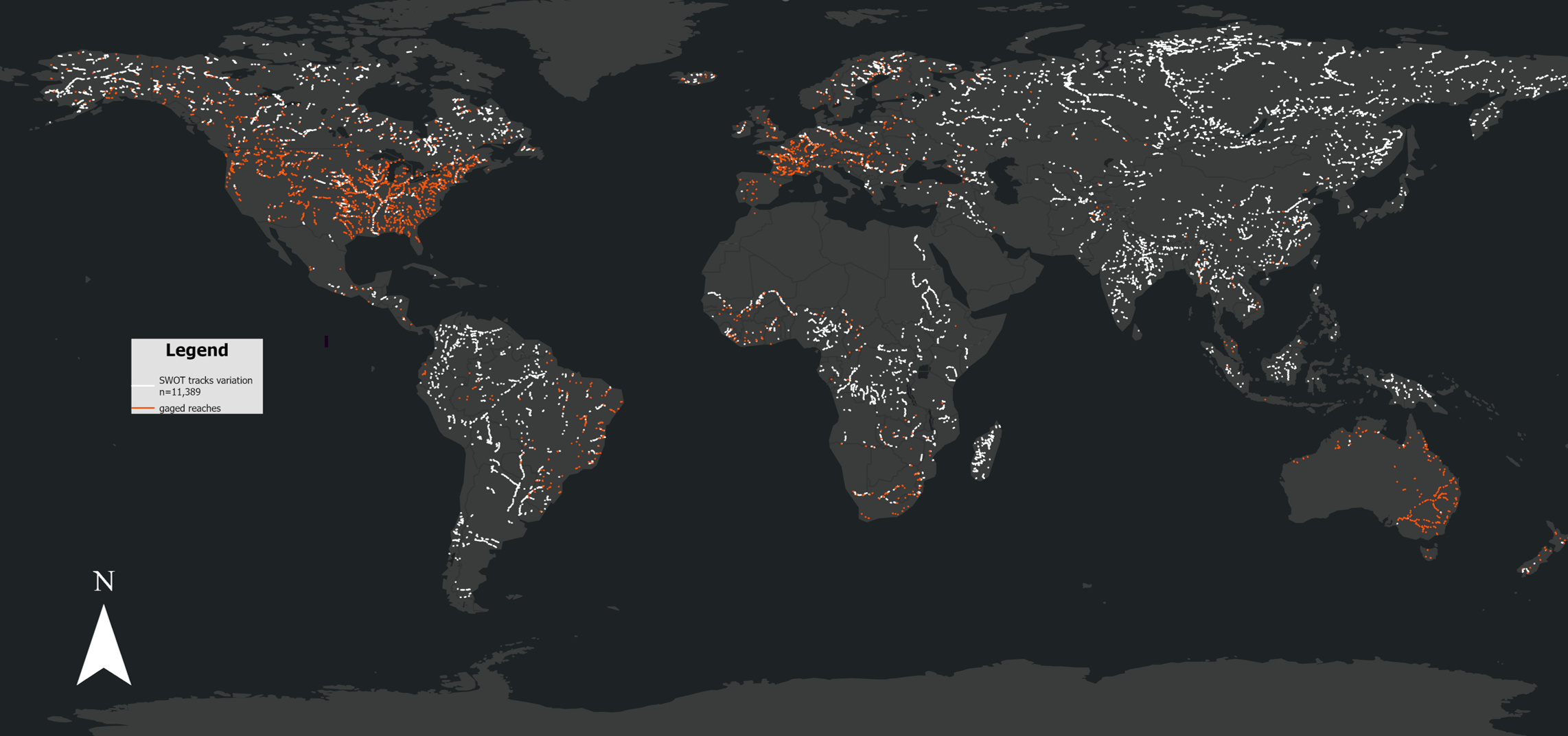Bridging the Gaps in Global Water Monitoring: Groundbreaking SWOT Mission Insights Revealed at AGU Annual Meeting

Last month, at the prestigious American Geophysical Union (AGU) Annual Meeting, Postdoctoral Scholar Steve Coss from the Byrd Center's Measuring the Water Cycle group unveiled groundbreaking findings on the global discharge measurements of the Surface Water and Ocean Topography (SWOT) mission.
The SWOT mission is a collaboration between the National Aeronautics and Space Administration (NASA) and France's Centre National D'Etudes Spatiales, with contributions from the Canadian Space Agency and the United Kingdom Space Agency. The SWOT satellite was launched in 2022 to observe Earth's surface and measure the height of water in lakes, rivers, reservoirs, and oceans, gathering crucial data from both well-monitored and remote, unmonitored river basins across the globe.
The mission aims to address limitations in global gage networks by capturing data on rivers wider than 100 meters and potentially as narrow as 50 meters, often hindered by cost, physical constraints, and privacy concerns. This unprecedented coverage could substantially increase the geographic scope of discharge observations, bridging gaps left by conventional ground-based measurements.
In AGU's joint session, Coss, who is a member of the SWOT Discharge Algorithm Working Group (DAWG), presented "Assessing SWOT Global Discharge Accuracy," research conducted with Professor Michael Durand (Byrd Center), Dr. Colin J. Gleason, and Travis Thomas Simmons (University of Massachusetts Amherst), and Dr. Nikki Tebaldi (Jet Propulsion Laboratory, California Institute of Technology).
During his presentation, Coss highlighted the transformative potential of SWOT data for monitoring and understanding river discharge worldwide. He explained that the findings come from an "unconstrained run," meaning no in situ gage calibration was performed. Discharge estimates were a preliminary step in the estimation framework. Only around 10% of the original SWOT observations passed these filters, but those remaining provided insight into how well SWOT captures discharge variability.
The DAWG found a strong alignment between SWOT data and ground-based observations in a subset of 11,389 global river reaches (approximately a 10 km stretch of river, rather than their entire length) contrasted with just 2,393 with recent gage coverage. The result is promising, given the short data record and the lack of calibration.

Dr. Coss also demonstrated how this approach is expected to improve as the mission continues and record lengths grow. Even now, SWOT is already tracking discharge on thousands of additional reaches beyond traditional networks, offering radically expanded possibilities for the availability of global discharge data in remote or otherwise neglected regions.
DAWG's findings will be forthcoming in Geophysical Research Letters. Their research will pave the way for a broader understanding of water resources, guiding more effective worldwide management and preservation of critical river systems.
Looking ahead, the plan is to refine calibration techniques at the basin level, which should help reduce bias and further bolster the reliability of SWOT's global discharge measurements.
Coss and Durand are also co-PIs on the recently funded Hydrology Science Team NASA grant entitled "Enabling exploration of Earth's water cycle: Moving the needle on SWOT discharge accuracy through ground-breaking advances." The aim is to identify discharge accuracy predictors to improve discharge accuracy.
